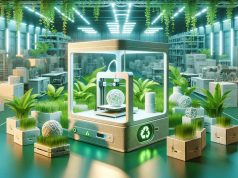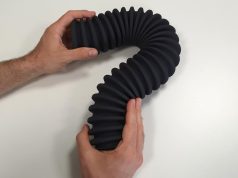The AM industry continues its positive momentum with new solutions introduced to the market that are increasingly advanced and sophisticated, including smarter 3D software tools, faster 3D printing systems, new materials, and automated post-processing solutions that all aim to help industrial users better integrate AM into their manufacturing processes. The key elements that will enable faster AM adoption are collaborations between different vendors and an intimate integration between their solutions. A guest post by Gil Lavi, Founder & CEO of 3D Alliances.
The island approach becomes irrelevant
Jumping back a few years when prototyping was the focus among AM users, manufacturers of 3D printing systems kept their software, hardware, and materials development in-house or, in other words, lived on their own islands. Integrating different elements of the end-to-end workflow was not critical and was done mostly by the end-users when required.
As the industry moves toward the integration of AM into manufacturing processes, collaborations between different 3D printing vendors will be essential. Without intimately connecting them, industrial users will find it difficult to accelerate the transition from prototyping to manufacturing and to integrate them into their internal manufacturing environments.
The bigger picture – not just additive
Zooming out first, I met Oqton at Rapid+TCT in Detroit. Oqton help manufacturers increase innovation and efficiency by intelligently automating production. They unify engineering and production with an AI-powered, technology-agnostic, cloud-based manufacturing OS for complete traceability and visibility across an organization. In combination with Oqton’s specialized applications for reverse engineering, inspection, design, 3D printing, and simulation, manufacturers can connect technologies and machines across multiple sites.
The beauty of this platform is the fact it connects additive solutions to a manufacturing environment that includes MES, ERP, CRM, CNC, and robotics, among others. Any industrial user that wants to lay the right foundations to automate its manufacturing environment must first examine the bigger picture.
Integrations and collaboration in additive
Now, zooming into the additive world, we see four different pillars that need to be integrated to enable a smooth end-to-end workflow: 3D software solutions, 3D printing systems, automated post-processing solutions, and materials. In most cases, each solution is developed and provided by a different vendor; however, in the past year, we are seeing interesting collaborations being formed. A good example of a company that decided to share its solutions with others is Carbon, the California-based 3D printing company.
To better connect its 3D printers with a post-processing solution, an integration was made between Carbon’s 3D printers and the new PostProcess DEMI 910, which is a full-stack resin removal solution specifically for the carbon ecosystem. As part of this fully integrated solution, PostProcess has developed a carbon-specific detergent for use in the DEMI 910 to ensure optimized end-part quality, improved safety, and increased throughput for carbon resin post-processing. Here is how it works:
On the software side, Carbon announced an interesting collaboration with 3YOURMIND, an AM workflow software provider that optimizes end-to-end AM processes for leading companies and 3D print services. This will enable Carbon users to access 3YOURMIND PLM, MES, and ERP tools to significantly save time and achieve higher machine utilization.
And there are more examples: Stratasys & Dyemansion have formed a strategic alliance to connect the Stratasys H350, a powder-bed system, to Dyemansion’s post-processing solutions; Castor’s integration with Ultimaker’s digital factory platform; Oqton and E-Plus 3D with a dental 3D printing partnership, and more.
Integration will accelerate
The post-Covid symptom of companies opening up is expected to continue and accelerate in the coming years. Moreover, new 3D printing companies that were established in the past two to three years developed their products with this approach with integration possibilities built into their solutions.
The goal is clear: industrial users would like to have a full end-to-end AM workflow that will enable them to integrate AM technologies with their non-AM manufacturing capabilities and their working environments. Having clear, reliable, and smooth processes will be the only way to expand the use of AM for real manufacturing.
(c) Picture, Text & Link: Gil Lavi, Founder & CEO of 3D Alliances.
Subscribe to our Newsletter
3DPresso is a weekly newsletter that links to the most exciting global stories from the 3D printing and additive manufacturing industry.






















